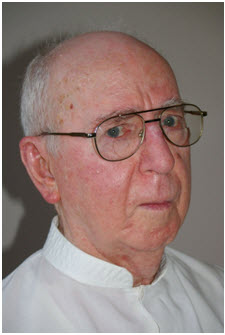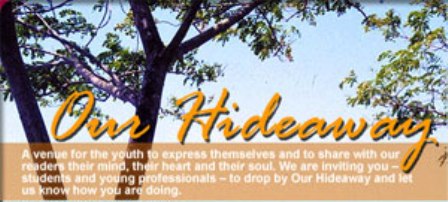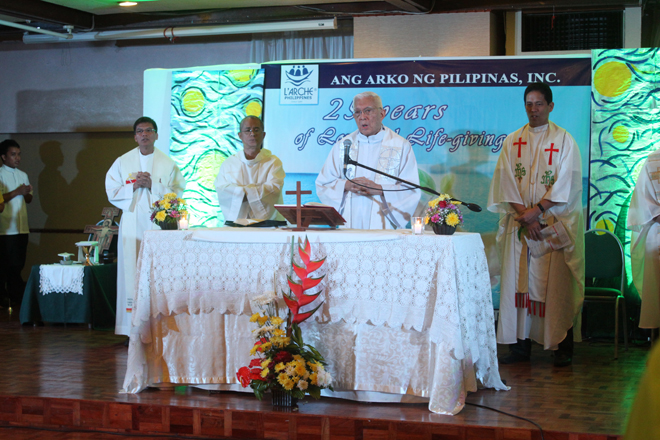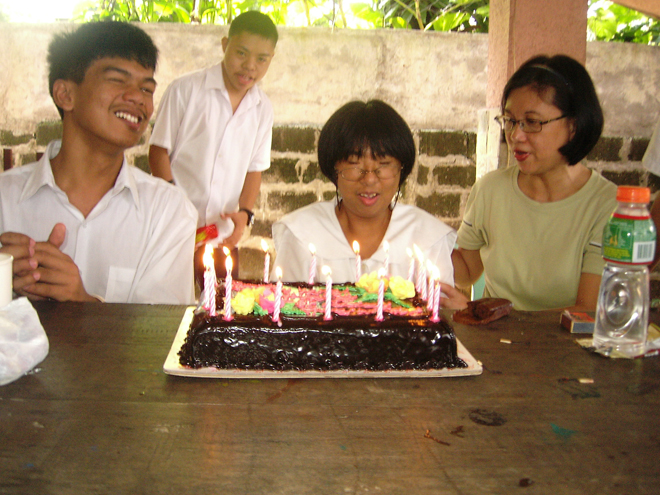Misyon Online - September-October 2013
|
Pope stresses importance of dialogue to Japanese students.
Back from Fiji
What happens now after your FMA in Fiji?I will continue my studies in theology another two years. (Editor’s note: these began last June.)Then I’ll be ordained deacon. Less than three years more. I’m getting nervous. I’m almost there. It’s more of an excitement, can’t wait to reach that stage already. Living in Fiji, I’ve seen my life as a missionary priest. That’s where my choices were affirmed.
Members of the traditional Indian Mandali Catholic prayer group of which Kurt is also a member. At first I thought I was ready for the missions. I had my spiritual year, then philosophy, then theology,not to mention all the exposure trips and the experience of being immersed in different pastoral situations. I tried ‘nibbling’ at it all in to nourish me and prepare me for the journey ahead. But right now, I can really say that nothing will prepare you for missionary life.
My Life In Arko Punla CommunityBy Vera Santos
In this article Vera Santos tells us how her ten years of involvement with AngArko has blessed her. ‘Blessed be the God and Father of our Lord Jesus Christ, the Father of compassion and God of all encouragement,who encourages us in our every affliction, so that we may be able to encourage those who are in any affliction with the encouragement with which we ourselves are encouraged by God’ (2 Corinthians 1:3-4, New American Bible Revised Edition). For the past ten years that I have been a friend and now a volunteer in the Punla Community, I’ve come to realize that one of the most joyful discoveries in my encounter with the Core Members is that in recognizing, affirming and comforting them, I find myself being recognized, affirmed and comforted as well. Let me recount my experiences with Raymond, Jordan, John Paul, Mariflor, Rea, Lala and Benito and why I find peace, joy and comfort when I am in Arko:
Ang Arko ng Pilipinas – Special Friends
Responsible Stewardship in MissionBy Sr Alicia Alambra FMM
‘Build a community of administrative andfinancial leadersin support of pastoral practice to achievethe mission of the Church.’ This is the goal of our work as Business Managers OF the parishes in the Archdiocese of Chicago. Our ParishI working ina parish, St Donatus, Blue Island, Illinois, founded by the Comboni Missionaries in 1909,.that includes few skilled but many unskilled workers, some of them migrants. The former residents were Italian who in recent years left the parish and went west of Chicago. Now about 90 percent of the populace are from Mexico and Guatemala.
The way we were – home to roost
Fatima’s StoryBy Fatima de Castro
Fatima comes to the Mission Office in Manila to do volunteer work. She is the eldest of five siblings. Her father is a seafarer and her mother a housewife. I’m Ma. Fatima de Castro, a Fourth Year college student at St Paul University, Manila. We have a way of life that’s austere and humble. Let me begin my story involvinga friend named Mike. He used to go to this place overlooking Teresa, Rizal, four hours from Manila. There he met an old lady he calls ‘Nanay’ who sellscoffee, snacks and cigarettes to passersby, especially truck drivers who deliver vegetables and meat downtown. She lives in a small crowded spot beside the highway. She never has a long sleep because she’s watching out for customers that might come and buy.
|
|||||||||||||
Pulong ng Editor
Pope stresses importance of dialogue to Japanese students.
On 21 August Pope Francis met with 200 students and staff from Gauken Bunri Seibu Junior High School, Tokyo, Japan.
Back from Fiji
Kurt Zion Pala is a Columban seminarian from Iligan City. Earlier this year he returned from his two-year First Mission Assignment (FMA) in Fiji. Here he is interviewed by Anne B.Gubuan, assistant editor of Misyon and Columban Mission.
What happens now after your FMA in Fiji?
I will continue my studies in theology another two years. (Editor’s note: these began last June.)Then I’ll be ordained deacon. Less than three years more. I’m getting nervous. I’m almost there. It’s more of an excitement, can’t wait to reach that stage already. Living in Fiji, I’ve seen my life as a missionary priest. That’s where my choices were affirmed.
It was tough but I was happy. Life on the missions is full of challenges that you will not really experience if you are in your own place.
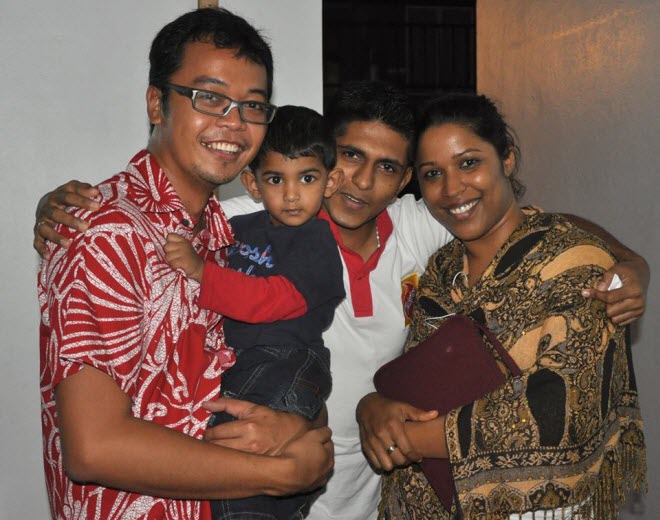
Members of the traditional Indian Mandali Catholic prayer group of which Kurt is also a member.
At first I thought I was ready for the missions. I had my spiritual year, then philosophy, then theology,not to mention all the exposure trips and the experience of being immersed in different pastoral situations. I tried ‘nibbling’ at it all in to nourish me and prepare me for the journey ahead. But right now, I can really say that nothing will prepare you for missionary life.
What is it about being new to the mission place?
Everything was strange when I first arrived in Fiji. I was like an infant. Back to zero. I had to learn everything: language, food, practices, customs and habits of the people. In order to survive in the mission field you have to be like a child: curious, open to all possibilities. I was able to somehow get over my shyness. As a ‘newbie’you would normally wait for others to initiate the conversation, but in Fiji they’re not like that, especially in the community where I lived with the Indo-Fijians. They’re different from the ethnic Fijians. They’re more conservative and reserved, especially the women. What made it even more difficult for me was the fact that they are not confident with their English so they choose to be quiet and timid. In the villages the women don’t really have higher education.
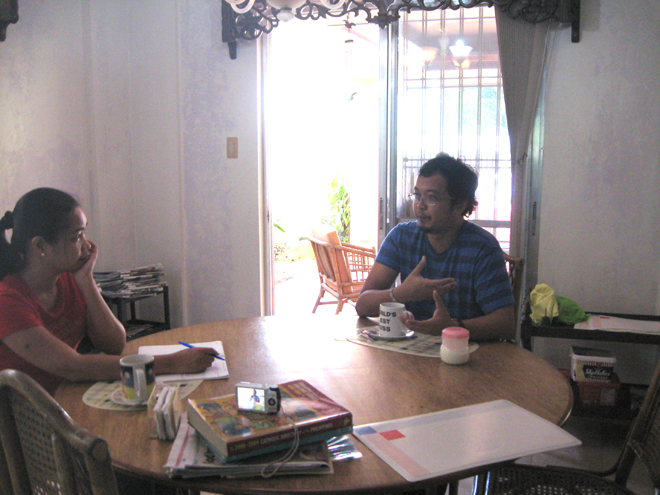
Kurt sharing his Fiji exprience.
If something is difficult but you are determined, you will learn how to do it.
And you did?
I did. I learned Hindi, the language of the Indo-Fijians. Hindi is more complicated than Fijian and uses a different script and has some different sounds. I started by learning the script and the sounds. I was like a grade one student, learning how to write the letters, the sounds of each letter and their pronunciations. As a missionary, this is where your patience is really tested. It was difficult, but not impossible. So anyone can certainly become a missionary.
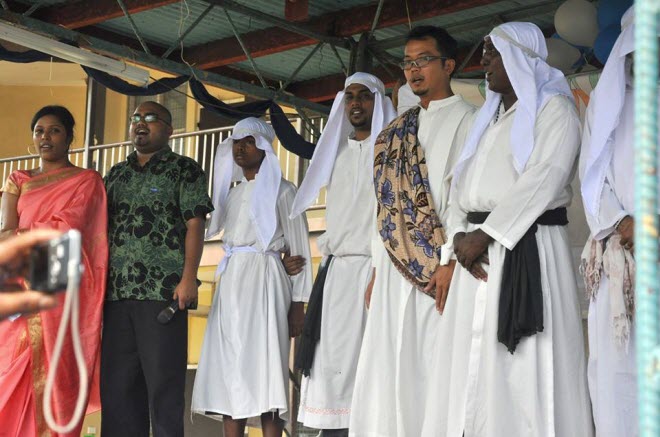
Kurt participating in his first Dharamsamellan or gathering of all Indian Catholics in Fiji.
It is very encouraging to hear you say that because usually going to a new place, not to mention faraway, entails hardships and difficulties. There are fears too of the unknown. Many would like to become missionaries but are afraid to go.
You really have to be adventurous. You shouldn’t be afraid to take risks or make mistakes because that’s how you’ll learn.
You heard the story when I missed my flight from Hong Kong to Nandi? I was alone and unprepared. It was good that I got the number of Fr Eamon Sheridan, then on the Columban General Council in Hong Kong.So I contacted him immediately. He thought I was making a bit of a courtesy call when in fact it was a call for help.
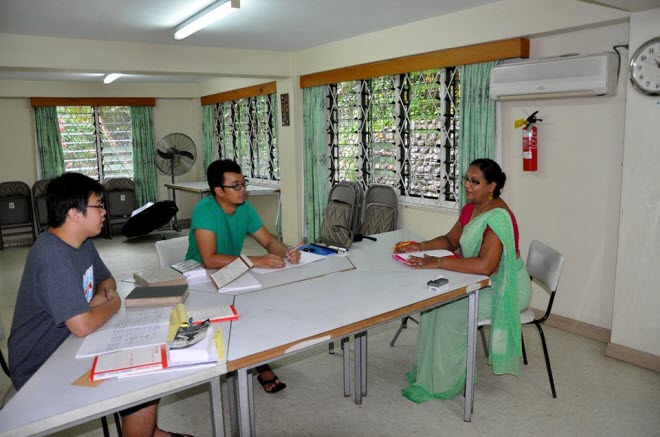
Kurt attending a session with their “Hindi” language teacher Tara.
That’s when I was able to conclude that indeed mission is for everyone. We all have it in us to surpass each obstacle or trial along the way. Mission comes from our baptism. It’s not just a simple blessing from the priest, but already a call. And out of gratitude for being called to be part of God’s family, we respond by proclaiming about Christ, about the gospel and sharing it with others. So if we only understand our baptism in that way, we wouldn’t be afraid of being missionaries.
But back in Fiji there were times when I would really find things too difficult and would just find myself asking questions like, ‘Why am I here? What am I doing here? Why am I forcing myself into a culture so different from my own? Why bother bringing myself into this situation when I could have done mission in my own country?’
So you reached that stage when you wanted to go home?
Yes I reached that stage. But what encouraged me was the people themselves. One of the hardest times for me was when I got dengue fever. I spent five days in the local hospital. I was there in the ward and it was very difficult, there was no privacy. I could hardly rest. I was lying there alongside Fijian and Indian patients.
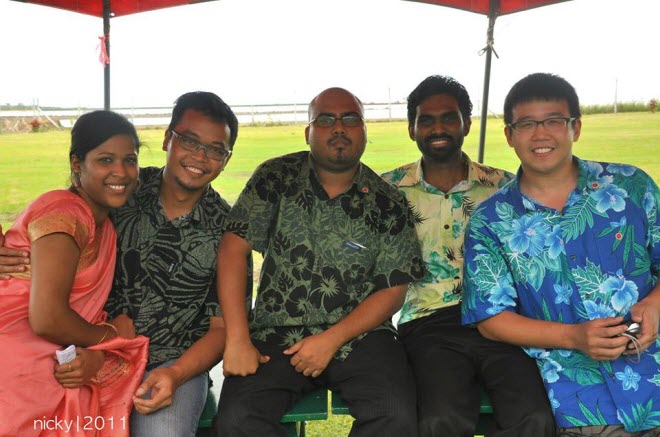
Kurt with friends at the Dharamsamellan or gathering of Indian Catholics in Fiji.
But that’s when I was able to practice my language. The others there were surprised that there was a foreigner among them who could speak their language. Indeed it was hard to be sick and alone in a foreign country but that’s where I realized I wasn’t actually alone. On my second day at the hospital I was visited by a Korean, three religious sisters, one Fijian, one Indo-Fijian and one Tongan and by lay missionary from Peru. We were like a United Nations forum.
God provided me with people to take care of me. I experienced their genuine concern. They told me they understood what I was going through and assured me, ‘Don’t worry, even if your family isn’t here, you can always consider us your family’. I was just new to their community but that’s already how they had accepted me there.
If you are determined in your mission, God will grant you the grace to face whatever challenges you may encounter along the way. That was where my decision to be a missionary priest was really affirmed.
In the community where you lived, is it a Christian community?
No. Ethnic Fijians are Christians but the majority are Methodist, not Catholic. In the Indian community the majority are Hindus, and then next to that are Muslims. The least in number are Christians. The ancestors of the Indian Catholics were Catholics when they arrived from India. In Fiji they preserved their culture and religion. The area around Naleba is mostly sugarcane fields and the majority of Indo-Fijians are sugarcane cutters. They are considered Fijians but you can hear them say ‘We’re not full Fijians’. There is quite a contrast as far as their real status is concerned. The Indians work really hard cutting cane. Ethnic Fijians can own property but Indo-Fijians cannot. They can buy only limited piece of crown land or freehold. And the farmlands are all leased. It made me think of our hacienderos here in the Philippines.
So I tried to blend with this inter-cultural community and didn’t limit myself to spending time only with the Catholics. I tried my best to visit all. I would get invited by Hindus to a festival andnext day would receive a similar invitation from the Muslims. Then Easter would follow. I really experienced the diversity of their cultures. But in spite of this diversity I experienced unity in the community. For example, when a Muslim died the grieving family would invite their Hindu and Catholic friends. And they would take turns in leading prayers. That’s one of the things that encouraged me in Fiji.
You can find Kurt Zion Pala on Facebook.
Here was a strong and brave man
By Fr John Keenan
Columban Fr John Keenan first came to the Philippines in 1966 and is currently chaplain at Centro Escolar University, Manila. We are republishing this article, which first appeared in Misyon in the January-February 2001 issue, in conjunction with Fr Pat O’Shea’s article Shaken and Stirred in this issue.
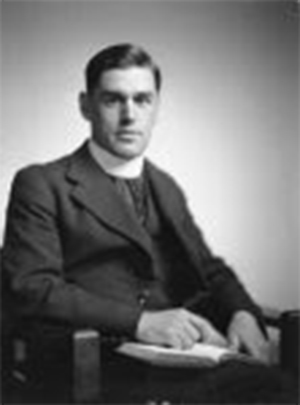
Fr Francis Vernon Douglas
As a new century and a new millennium begins, Pope John Paul II is anxious that the lives and deaths of those who suffered and died heroically in the service of others be recorded and documented. The sufferings and death of Fr. Francis Vernon Douglas at the hands of the Japanese Military Police in the Philippines during World War II is one story that must not be forgotten. Fr. John Keenan, a Columban missionary from Ireland, tells us about it.
Fr. Douglas was tortured and is thought to have died near Paete, Laguna, in July 1943. Paete is a quiet country town nestled between the foothills of the Sierra Madre Mountains and Laguna de Bay, about 115 kms from Manila. Founded as a Christian settlement around 1580, its inhabitants are famous for their woodcarving skills.
Dawning of terror
On July 25, 1943, as usual the people were eagerly looking forward to their annual fiesta in honor of St. James the Apostle. However, the peace and tranquility of the town, crowded with visitors, was abruptly interrupted when the Japanese Imperial Army decided to zone off the area. It was cordoned off and no one was allowed to leave. All males from fourteen upwards were rounded up and incarcerated in the centuries-old parish church, famous for its beautiful woodcarvings and paintings. The Japanese were seeking out guerrillas and their collaborators who were carrying on a resistance in the woods of nearby hills. For several days, some 250 men were interrogated and tortured, deprived of sleep and mercilessly beaten until they gave information or died.
Caucasian Captive
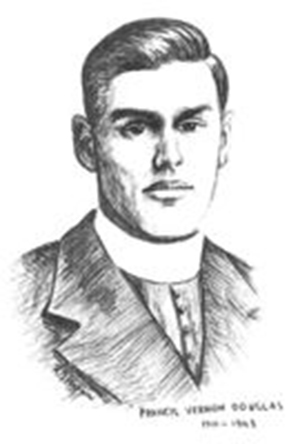
Fr Francis Vernon Douglas
A day before the fiesta, Japanese soldiers arrived in a truck with a tall, unknown Caucasian in custody dressed in a white cassock. He was tied to a lamppost and made to endure the hot tropical sun throughout the day. No one knew who he was, or where he came from. He was in fact, Fr. Francis Vernon Douglas, parish priest of Pililla, Rizal, some 50 kms away. Hours earlier he had been abducted from his convento and taken over the mountains to Paete.
Frank or Vernon (to his friends) was born in Johnsonville, Wellington, New Zealand, on May 22, 1910. In his youth he excelled at rugby and cricket, and later studied for the priesthood for the Archdiocese of Wellington. He was ordained on October 29, 1934. After an enjoyable and successful year as an assistant priest in New Plymouth, N.Z., he felt that God wanted him to become a missionary. He joined the Society of St. Columban and arrived in Manila in 1938. His first assignment was as parish priest of Pililla, where he struggled with the Tagalog language and tried to remain neutral between the kempeitai, the Japanese military police, and the Filipino-American guerrillas hiding in the hills around Pililla.
Just like Jesus at the Pillar
Meanwhile in Paete, the local chief of police, Basilio Y. Agbay, told one of his captors that the Caucasian man was a priest, but the Japanese soldier replied, “That man is a spy”. Exhausted after a day under the sun, Fr. Vernon was taken inside the church, by now a torrid dungeon. He was first taken to the sacristy where the terrorized peopled could hear moans as he was being tortured. Later, he was dragged to the baptistery where he was tied to the baptismal font, and again severely beaten until blood splashed on the surroundings. Stripped to the waist, clad only in white slacks with his torso and arms black and blue, oozing with blood, he was tied to the left post under the choir loft. All the torture and pain seemed to be concentrated on him while the 250 frightened men looked on. His bleeding and battered body immediately reminded the people of the scourging of Jesus at the pillar. “Yet ours were the sufferings he endured . . . He was harshly treated, but unresisting and silent, and he humbly submitted . . .” (Isaiah 53: 4-7)
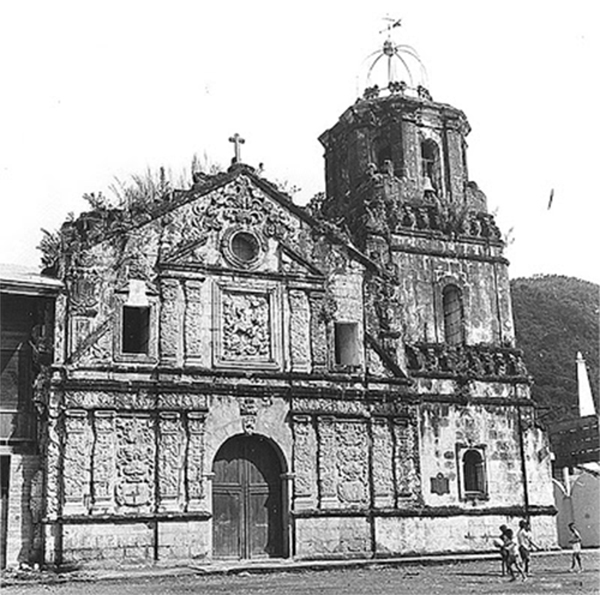
Church of St James the Greater, Paete, Rizal, where Fr Douglas was scourged
For three days and three nights, he was forced to stand. One of the soldiers hit him on the forehead with the butt of his sword and immediately blood gushed out all over his face. The others were allowed to lie down and sleep. Throughout all this he uttered not a word. Instead, he kept his eyes on the altar and continued to recite the Rosary. A bowl of rice was placed at his feet, which he did not touch. His bloodstained cassock lay on the floor beside him. Finally, perhaps fearing that his end was near, he asked for the local parish priest to hear his confession. This was done in the presence of his torturers, lest they later force the confessor to break the seal of confession. Shortly afterwards, bloodied and bruised, he was bundled into a truck that sped away in the direction of Santa Cruz and Los Baños, where there were many prisoners of war, including priests and religious. He was never seen again.
In his silence
Why was Fr. Douglas singled out for such horrible torture? Did he refuse to talk in order to preserve the seal of confession or information held in confidence? As he was being interrogated in Pililla before being abducted, neighbors heard him remonstrate with the military police, “You have no right to ask me that question, and I cannot, in conscience, answer it.” Whatever the reason, one thing is certain, here was a strong and brave man who suffered in silence rather than betray his friends.
Savior of the town
An early report published in The Far East, the magazine of the Columbans in Ireland, in December 1945 stated: ‘What Fr Douglas suffered in Paete made a deep impression on the people of that town. The Filipinos say that he seemed to be like our Lord Himself, as he stood there, tied to the post in the Church, constantly beaten and ill-treated, but always with unquestionable patience. They expressed the belief that what he suffered made him a kind of savior of the town.’ From the time he was brought there, no Filipino received any ill treatment. On him were concentrated all the anger and hatred of the Japanese soldiers.
Today as the Church prepares a new martyrology we fervently hope that Fr Douglas’ name will find a place in that holy book. He may even become the first New Zealand saint.
My Life In Arko Punla Community
By Vera Santos
On 13 April Gaudencio Cardinal Rosales, retired Archbishop of Manila, was the main celebrant at a Mass to celebrate the 25th anniversary of the founding of Punla, the only L’Arche community in the Philippines. It is located in Cainta, Rizal.’L’Arche’ is the French for ‘The Ark’, a name derived from Noah’s Ark. L’Arche Philippines is known as Ang Arko ng Pilipinas.
Over the years a number of Columban seminarians have done pastoral work in Punla.
In this article Vera Santos tells us how her ten years of involvement with Ang Arko has blessed her.
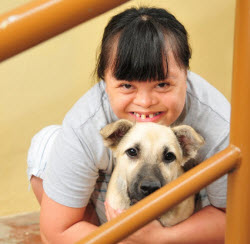
Lala and Hachi
‘Blessed be the God and Father of our Lord Jesus Christ, the Father of compassion and God of all encouragement,who encourages us in our every affliction, so that we may be able to encourage those who are in any affliction with the encouragement with which we ourselves are encouraged by God’ (2 Corinthians 1:3-4, New American Bible Revised Edition).
For the past ten years that I have been a friend and now a volunteer in the Punla Community, I’ve come to realize that one of the most joyful discoveries in my encounter with the Core Members is that in recognizing, affirming and comforting them, I find myself being recognized, affirmed and comforted as well. Let me recount my experiences with Raymond, Jordan, John Paul, Mariflor, Rea, Lala and Benito and why I find peace, joy and comfort when I am in Arko:
Ang Arkong Pilipinas – Special Friends
RAYMOND always welcomes me with a vibrant smile, while grabbing my hand, squeezing it hard and rubs both my palms on his well-shaven head. Not only do I get a good hand massage, I recognize and feel his trust in me.
JORDAN looks at me and when I call his name, utters his usual sound and gives his angelic smile. Though wheelchair-bound, I can see peace and contentment in his eyes and I find comfort in that.
L’Arche – it’s all about love
|
|
|---|
JOHN PAUL is a power-pack of energy. He will always tell during our kumustahan activitiy in Daycare how his breakfast gave him energy that day, and of course never forgets to say it is his Kuya Hesus (Brother Jesus) who is his main source of energy. He is so inspiring and unaware that he is teaching us because of his eagerness to learn and he is alwayshappy and focused in whatever work he does.
MARIFLOR never fails to greet me with a ‘Good morning, Ate Vera! How are you today?’ every time I come to Daycare for my volunteer work. She comes out of Biyaya House and asks for a hug followed by her proud recounting of what she will cook for lunch that day. She is a good cook and even gives me helpful tips on certain recipes and I appreciate that because I learn from her too.
REA - I am amazed that one way or another I can understand what she says and we communicate well. She is carefree and full of laughter. I am surprised that she always remembers the little things I do for her and thanks me more than enough.
LALA is the quiet type, so relaxed in her work yet so dedicated. I see her as the Ate (big sister) to the other core members because I see how she cares for them too. She is also a good dancer, very graceful and a quick-learner.
BENITO is also a quiet lad and a small boy at heart. He likes to play with his marble collectionand loves to read books on history and science discoveries. What I admire in him is his great talent in playing the guitar. That is his forte. I was once requested to be his tutor and I found him patient and eager to learn. Sometimes heconfides in me about his fears about coping with his studies. A little assurance and perseverance readily allays them.
L’Arche – Jean Vanier (Founder Jean Vanier speaks about the beginnings and the meaning of L’Arche).
I feel so blessed and privileged to be with the community and to share my life with all the members of Punla. I love all of them and I feel so humbled to be a part of Ang Arkong Pilipinas.
‘I believe that those we most often exclude from the normal life of society, people with disabilities, have profound lessons to teach us. When we do include them, they add richly to our lives and add immensely to our world.’ Jean Vanier, founder of L’Arche, Becoming Human).
Gallery
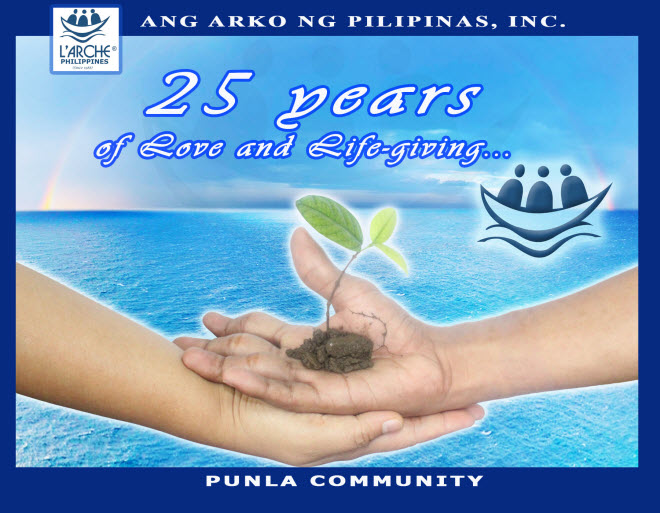
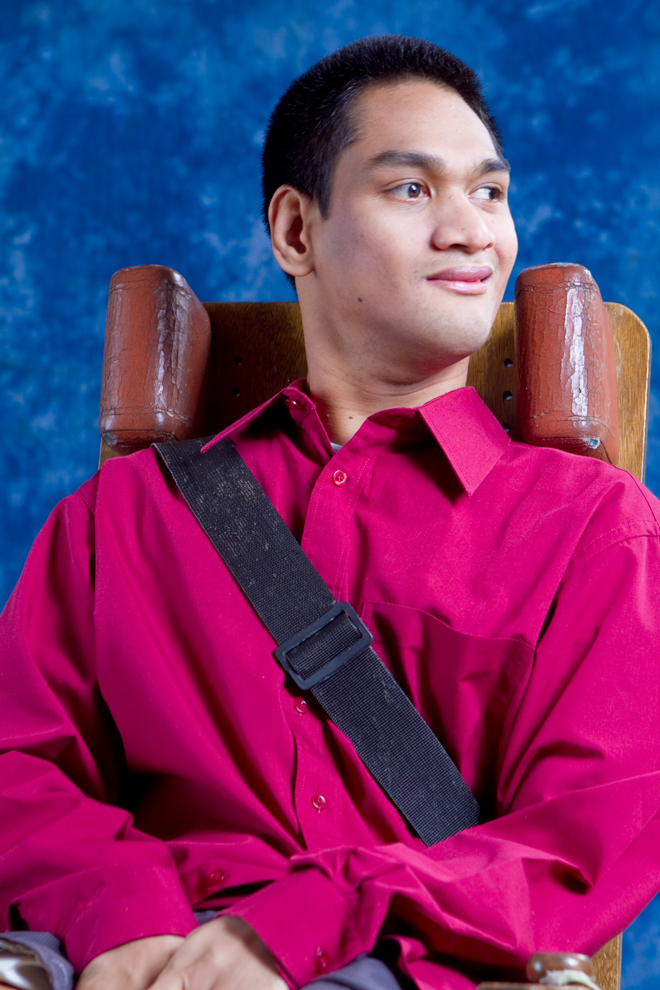
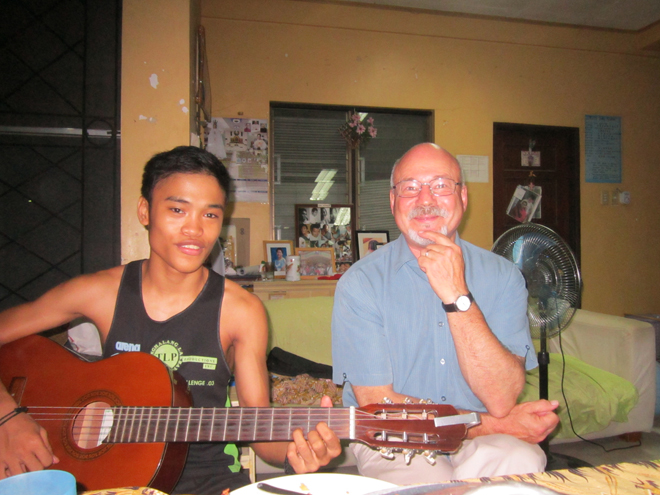
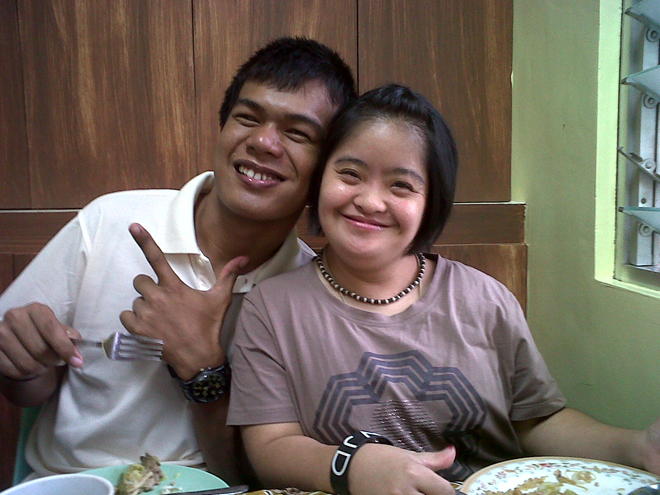
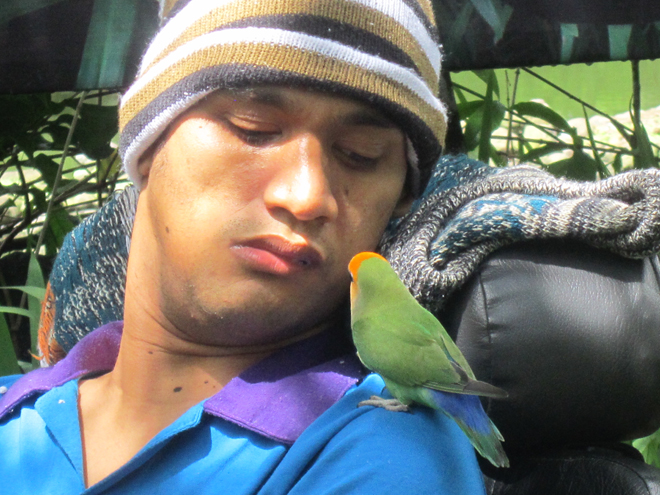
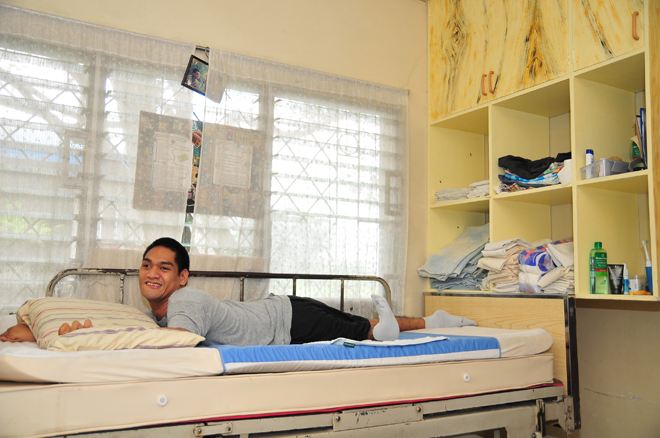
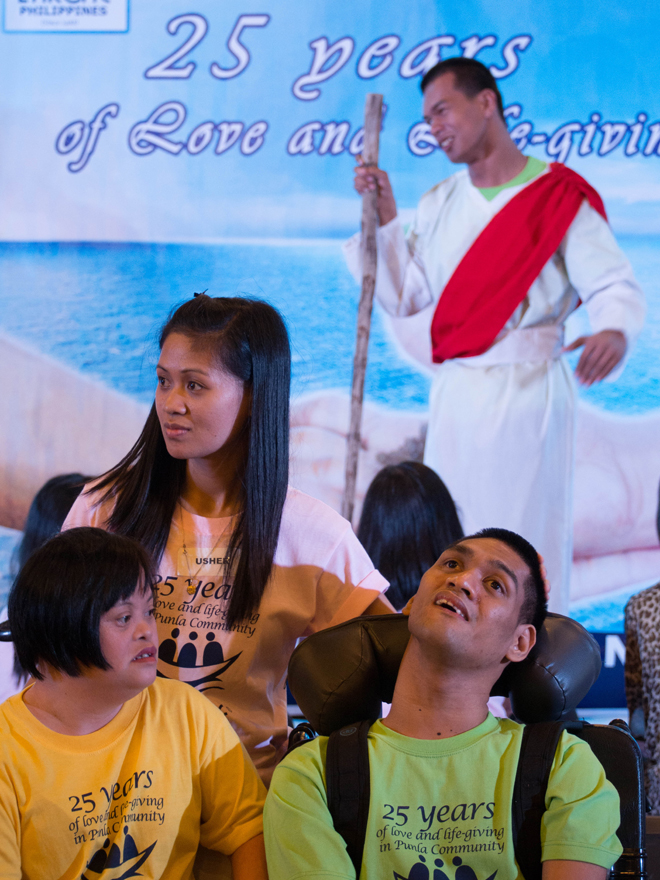
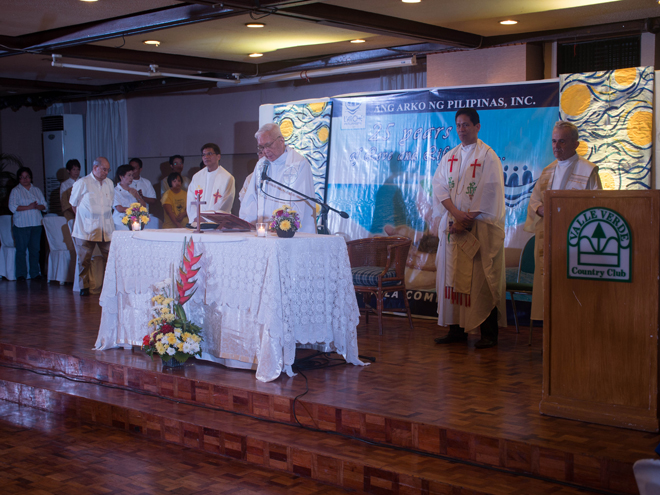
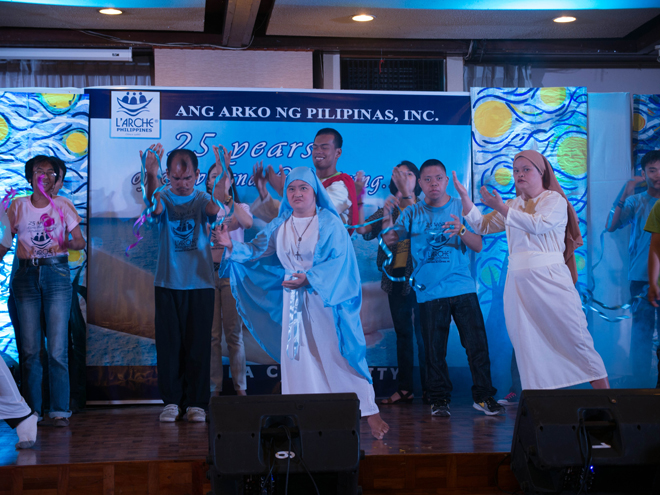
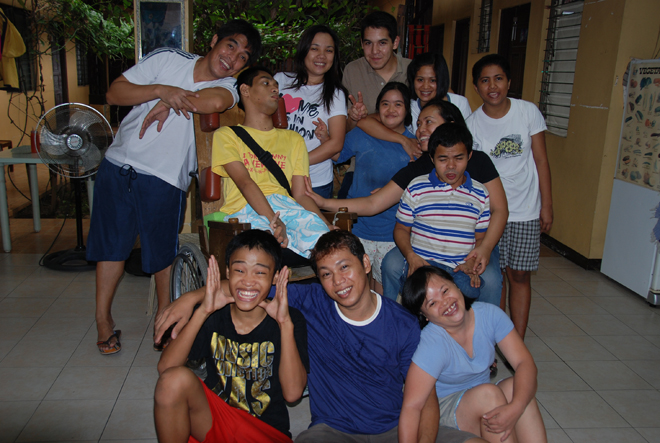
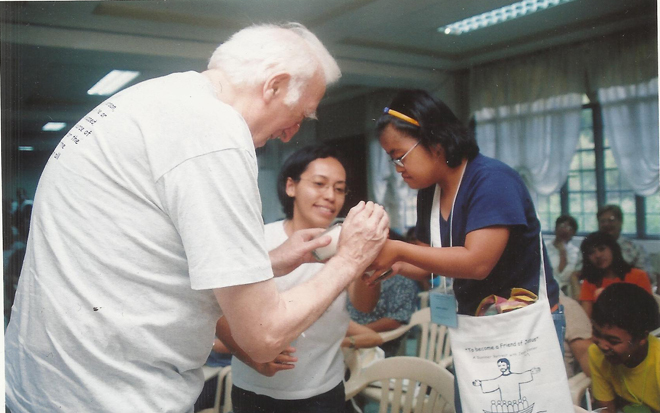
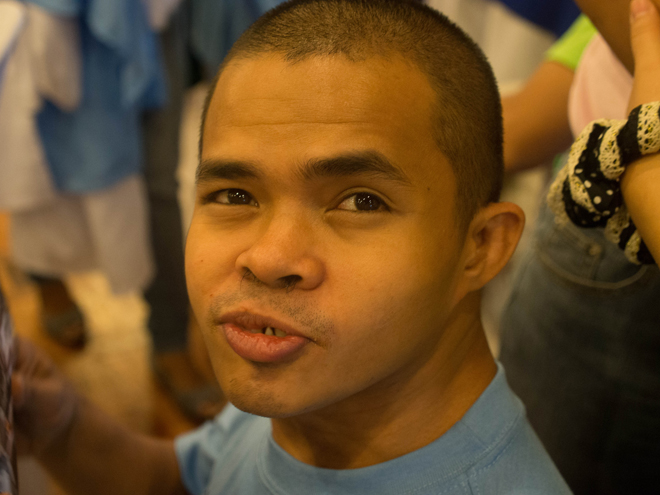
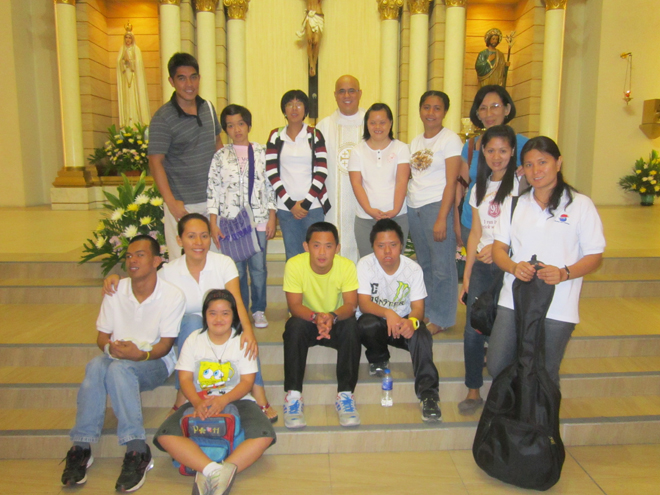
Responsible Stewardship in Mission
By Sr Alicia Alambra FMM
Sister Alicia is a Franciscan Missionary of Mary from the Philippines. She has written before for Misyon, from Bolivia, Rome and from the USA. She is currently working in the Archdiocese of Chicago. The missionary work of the Church could not continue without the service of those who spend much of their time in front of a computer ensuring that financial resources are properly used.
‘Build a community of administrative and financial leaders in support of pastoral practice to achieve the mission of the Church.’
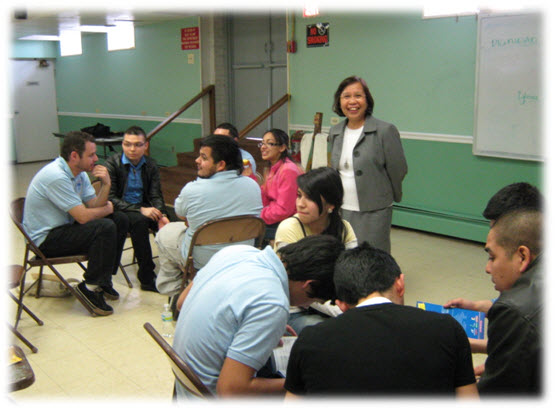
Sister Alicia leading a workshop with young adults of the parish
This is the goal of our work as Business Managers of the parishes in the Archdiocese of Chicago.
Our Parish
I working in a parish, St Donatus, Blue Island, Illinois, founded by the Comboni Missionaries in 1909, that includes few skilled but many unskilled workers, some of them migrants. The former residents were Italian who in recent years left the parish and went west of Chicago. Now about 90 percent of the populace are from Mexico and Guatemala.
My Work
My work is to assist the Pastor in the governance and the leadership of temporal affairs of the parish, under the umbrella of the Archdiocese. We are provided with the most up-to-date software in our payroll and accounting. Many times we are given updates through virtual education platforms created by outside consultants.
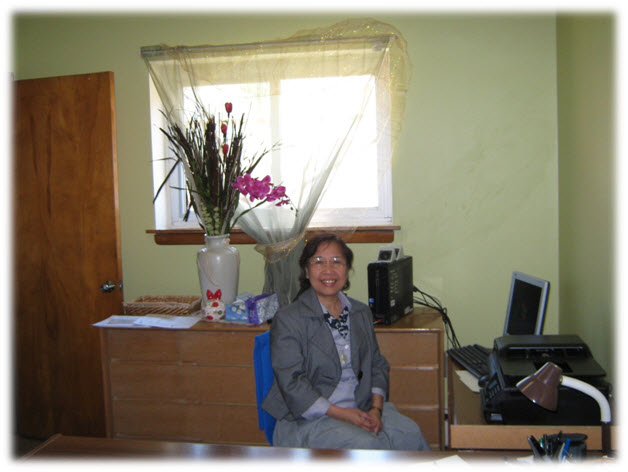
Sister Alicia in her office in St Donatus Parish as Business Manager
There are academic tracks entitled ‘Stewardship’ to encourage us and our parishioners to support our mission direction. There are church agencies like Parish Transformation and Capital Campaign that help us in promoting the strategic use of Time, Talent and Treasure within the parish.
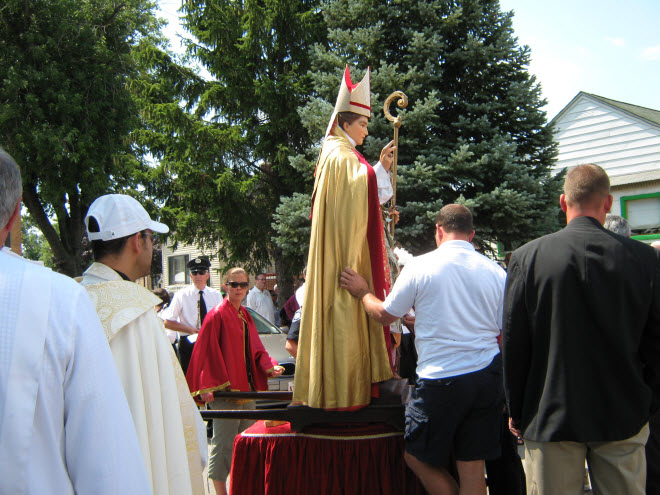
St Donatus, our patron, while in procession the people
pin money and pray for their intentions.
Belong to the Archdiocese of Chicago
The Archdiocese of Chicago has developed a Strategic Pastoral Plan for six years at all levels for the mission in the church. In the words of our Cardinal,
‘ . . . we have formulated a strategic pastoral plan, not to change what the Lord has given us but to remain faithful to what he has entrusted to us.
‘Over the next several years, we will be paying special attention to the New Evangelization, looking for ways to draw those who have been baptized in the Catholic Church into a more conscious and deliberate commitment to live out their faith. We will be making a special effort to reach out to our teens and the young people in their early stage of adulthood.’(Francis Cardinal George OMI, Archbishop of Chicago.)
What the plan launches:
Ongoing - Parish Transformation and Financial Stability
2011 - Year of Teens and Young Adults
2012- Year of Sunday Mass
2013 - Year of Parent Formation
2014 - Year of the Sacraments
The expectation is to develop the growth of the Catholic community of faith in each parish over these years and to more deeply incorporate the faithful in the life of the Church throughout the course of their lives.
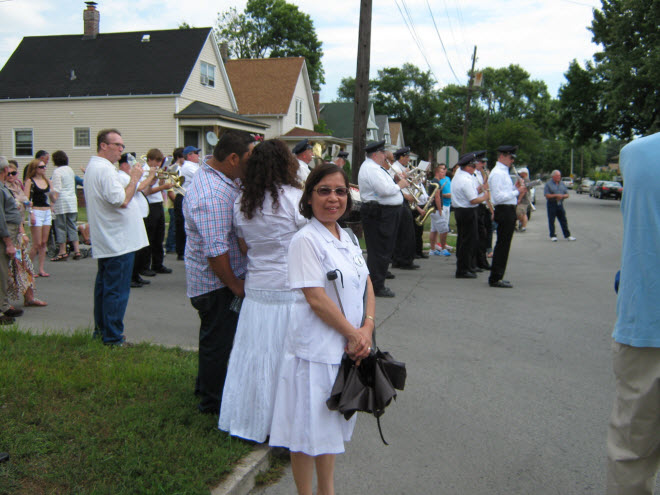
In the procession, the local band of Italians still play the traditional songs, for the younger generation, while the Latinos, try to learn other culture.
Other Involvements
Aside from being the Business Manager of the Parish, I am also involved in religious education, the liturgical committee and RCIA (Rite of Christian Initiation of Adults).
When invited, I give talks to young adults and other groups in the parish.
Encapsulated good governance, leadership and evangelization
My involvement keeps me in touch with the history and mission of the Catholic Church, along with the more academic tasks of handling the books of accounts, preparing financial statements and budgets.
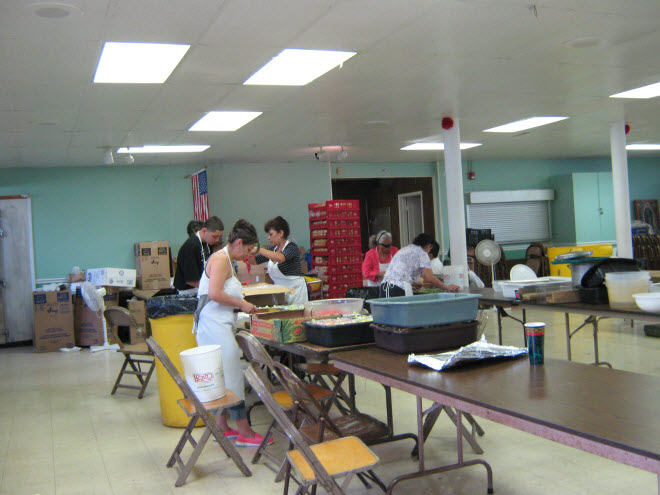
Italians in the kitchen the whole day, cooking pizzas for the feast of St. Donatus.
All these encapsulate good governance. Leadership and evangelization are guided by the Strategic Planning at all levels, the parishes, Archdiocese, national and universal Church.
Values that include spirituality in the workplace, social justice, a theology and spirituality of collaboration, shared decision-making and consensus building, human resource concepts at the Archdiocesan level, finance and accounting according to the accepted policies and procedures, managing capital and other parish administration best practices, are outlined for us to guide us in our jobs.
Christ is the Light of nations. Because this is so, this Sacred Synod gathered together in the Holy Spirit eagerly desires, by proclaiming the Gospel to every creature, (cf Mark 16:15) to bring the light of Christ to all men, a light brightly visible on the countenance of the Church.
(The opening sentence of the Second Vatican Council's Lumen Gentium ,Dogmatic Constitution on the Church.)
Shaken and Stirred
By Fr Pat O’Shea
Fr Francis Vernon DouglasThe 70th anniversary of the death of ColumbanFr Francis Vernon Douglas, a New Zealander, was observed on 27 July this year. He was last seen alive in Paete, Rizal, Philippines, on that date in 1943 when Japanese soldiers took him away in a truck after days of torturing him. Fr Pat O’Shea, an Irish Columban who worked in Mindanao in the 1970s, writes here about an event in the Archdiocese of Wellington, for which Fr Douglas was ordained before becoming a Columban, to mark the anniversary

Coat-of-arms of Francis Douglas Memorial College
It is 70 years since the missionary life of Fr Francis Vernon Douglas ended in death after a period of interrogation and torture by the Japanese forces that at that time occupied the Philippines and his parish of Pililla. We gathered to remember and honor him. We also wanted to take time to reflect together on faith and mission.
The ceremony took the form of hymns, prayers and reflections beginning with a welcome (karanga) by Elizabeth Woodhouse and song (waiata – the Maori word for ‘song’) lead by her husband, Russell. The emcee for the event was Fr Brian Vale, himself an alumnus of Francis Douglas Memorial College and whose father, Jim Vale, was coached in rugby and cricket by Francis Douglas.
Fr Michael Gormly retold the story of Father Frank with a focus on his growing up in Johnsonville, his call to priesthood initially in the Archdiocese of Wellington and then with the Columbans in the Philippines and his final days before he disappeared never to be seen again.
At the end of his reflection Father Michael made special presentations to some of the people who are a vital part of his life and legacy. These included:
Maria McElroy on behalf of the Douglas family who were present in big numbers
John Kleinsman representing the people from his home parish of Johnsonville,
Staff members and students from the college in New Plymouth that proudly bears the name Francis Douglas Memorial College Patricia Brooks who made his story widely available through her book With No Regrets.
Michael Pervan who sculpted a lasting memorial to Francis Douglas.
Artist Michael Pervan (left) with Columban Fr Michael Gormly (right).
The support of people from many other parishes and organizations, from the priests of the diocese as well as religious sisters, brothers and priests was very evident and Father Michael thanked them for their presence. The local Columban group was boosted by the presence of Fr Brian Vale, Fr Noel Connolly, Fr Pat McMullen, Chris Farrelly, Garry Cockburn, Peter Toy, Tony Fouhy and Russell Woodhouse.
The focal point of the celebration was the handing over to Archbishop John Dew of Wellington and the people of the archdiocese of a marble sculpture of Francis Douglas commissioned by the Columbans and created by Auckland-based artist Michael Pervan. Archbishop John promised that it would be given a prominent position in the cathedral. He spoke of the importance of celebrating local saints as part of the Year of Faith. While New Zealand does not as yet have an official saint, in the faith imagination of many Catholics Suzanne Aubert and Fr Francis Douglas already act as inspirational figures.
Archbishop John Dew
The keynote address was given by Fr Noel Connolly and focused on what we have learned about mission since Vatican II. Father Noel demonstrated how grounding mission in the Trinity and the Kingdom of God, which was a feature of the Council, reveals a wider and more inclusive context than the one which emerges when we make the church the starting point. The mission is God’s and the church exists to serve that mission. The church is missionary by its very nature which means, he suggested, that if it is not about mission it has no reason to exist. God is saving, healing, and reconciling the world. For our part as church we need to recognize that the majority of Kingdom-good done in the world today will not be done by Catholics or even Christians. It will be done by people of many religions and none. We continue to respond to the original call of Jesus ‘to repent and believe the good news’ and to his commission ‘go out and proclaim the good news to all nations’.
There were two little moments that for me that touched gently on the meaning and impact of the life and death of Fr Francis Douglas. The first was when Michael Pervan mentioned that the piece of marble he had used for his sculpture used to form the base of a statue of Christ carrying his cross that was in the seminary in Mosgiel. The other came in the closing remarks made by Bishop Owen Dolan, retired coadjutor bishop of Palmserston North. He recalled a visit he made with Fr John Carde to Pililla. They were shown a baptismal register from 1943 with the frequent appearance of the name F V Douglas. Then in July not only does the name F V Douglas disappear but there is a long period before the next baptism is recorded.
In these days we continue to be shaken by aftershocks and stirred by the memories of the inspirational life and a glorious death of Fr Francis Vernon Douglas.
Fr Pat O'Shea is an Irish Columban who worked for some years in Mindanao. He now lives at St Columban’s Lower Hutt, New Zealand.
You can read more about Fr Douglas on the website of the school named after him, Francis Douglas Memorial College, New Plymouth, New Zealand
The way we were – home to roost
|
|
Fr Patrick Hickey died in Australia on 1 August 2013. This article, which shows a lighter though very practical side of missionary life, first appeared in The Far East, the magazine of the Columbans in Australia and New Zealand, in October 1967 and was posted on the website of the Columbans there in 2009.
The pullet arrived, a gift from a family in the parish. Having no chicken coop, I adopted the practice, followed locally with fighting cocks, of tying one end of a piece of string to the bird and the other to a stake in the ground. At night she was locked in the shed.
After two days of this, our pullet learned where home was and we turned her loose. Each afternoon she returned, promptly at five, stopping by the door of the presbytery for a few minutes until she was noticed, then waiting in the shed for her supper.

She began to lay. We followed her activities with interest and were distressed to notice that, with seven eggs in the nest, she became ill.
We are early risers in the Philippines. The local radio has a programme from 5am to 5.30am sponsored by the producers of a certain brand of poultry medicine. Why not? It could do no harm. We tried it. Two doses were enough: she struggled to her feet and got on with the job.
By now the cook, a lad of about twenty years of age, had decided that his parish priest was interested in poultry. He donated a second pullet. The same procedure was followed, a piece of. string and a stake in the ground. But No. 1 refused to allow her into the shed at night so No. 2 made a place for herself outside the sacristy.
On the same day that No. 1 hatched out her brood, No. 2 began to lay. In a short time we had two families roaming around the place.
It was then that an elderly lady arrived on the scene, a poor woman, with a weak-looking young rooster for sale.
I did not want a rooster, the price was a little high, but the woman needed the money. I bought him, intending to give the nuns a poultry dinner that night. But someone suggested he might be good for breeding so, again, why not?
AS I SAY . . .
Now, with a rooster, two hens and fifteen small chickens about, it was time for the chicken coop.
Everything was fine for a short while. The young rooster was thriving by this time. But what use is a king without subjects? The next step was to buy two hens. Fine! But then one of the schoolboys donated hen No. 5! Things were getting out of hand. There were twenty-one birds of varying ages. And that first family was growing up.
It was difficult to keep track of things at this stage. The first family, now reduced to four, was mixing with the adult birds. The second family, ten of them, was in its own coop. No. 1 was sitting again, No. 3 was sitting, No. 2 was trying to share the nest of No. 4.
Eventually, the third and fourth families were roaming around the church yard and all available hens were laying. Thirty-five birds by this time, with twenty-five eggs yet to be hatched. And it all began with that gift of one pullet. And all in five months!
Father Michael Doyle and Father William Hennessey called in to sample two of the first brood, just eighteen weeks by this time. Delicious!
As I say, I am no chicken farmer!
You may read Fr Hickey’s obituary here.
Our Hideaway
Fatima’s Story
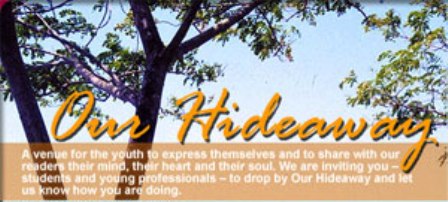
It is our delight to introduce to you this new section in Misyon – Our Hideaway. A venue for the youth to express themselves and to share with our readers their mind, their heart and their soul.
By Fatima de Castro
Fatima comes to the Mission Office in Manila to do volunteer work. She is the eldest of five siblings. Her father is a seafarer and her mother a housewife.
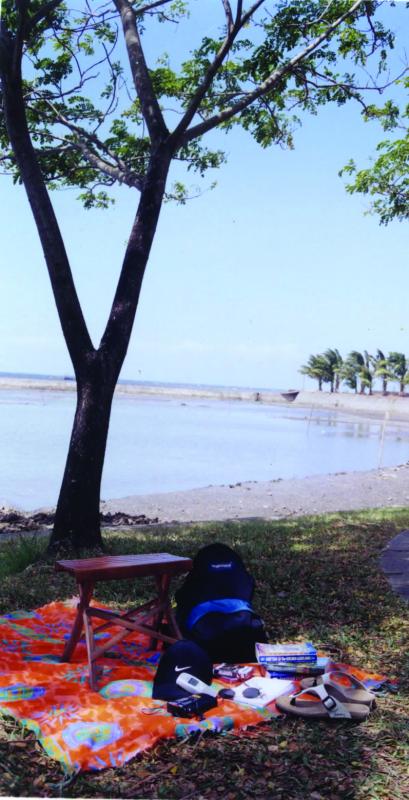 I’m Ma. Fatima de Castro, a Fourth Year college student at St Paul University, Manila. We have a way of life that’s austere and humble. Let me begin my story involvinga friend named Mike. He used to go to this place overlooking Teresa, Rizal, four hours from Manila. There he met an old lady he calls ‘Nanay’ who sellscoffee, snacks and cigarettes to passersby, especially truck drivers who deliver vegetables and meatdowntown. She lives in a small crowded spot beside the highway. She never has a long sleep because she’s watching out for customers that might come and buy.
I’m Ma. Fatima de Castro, a Fourth Year college student at St Paul University, Manila. We have a way of life that’s austere and humble. Let me begin my story involvinga friend named Mike. He used to go to this place overlooking Teresa, Rizal, four hours from Manila. There he met an old lady he calls ‘Nanay’ who sellscoffee, snacks and cigarettes to passersby, especially truck drivers who deliver vegetables and meatdowntown. She lives in a small crowded spot beside the highway. She never has a long sleep because she’s watching out for customers that might come and buy.
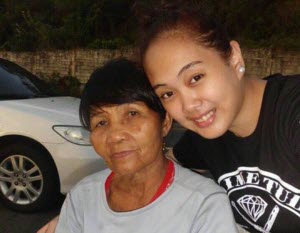 I went to this place with Mike to relax, enjoy the view of the sunset and of Laguna de Bay and also meet Nanay. The first time I saw her, I felt sad and pitied her because she was on her own. Her husband is always drunk and she can’t depend on him. They have no electricity so theydepend only on a lamp. No gas stove, just a grill. Mike gave her a cellphone with a load so that the three of us could keep in touch.
I went to this place with Mike to relax, enjoy the view of the sunset and of Laguna de Bay and also meet Nanay. The first time I saw her, I felt sad and pitied her because she was on her own. Her husband is always drunk and she can’t depend on him. They have no electricity so theydepend only on a lamp. No gas stove, just a grill. Mike gave her a cellphone with a load so that the three of us could keep in touch.
On Thursday7 March Mike told me that Nanay was sick and had no one to take care of her so we decided to gothere despite the lateness of the hour and our lack of money. I had enough in my wallet for the gasoline for the roundtrip on Mike’s scooter. Before taking a jeepney to where I was to meet him I put the fare in my hand so that I wouldn’t have to take my wallet out of my bag.
When we reachedAntipolo, my bag felt lighter, which contained, among other things, a shirt and some noodles for Nanay. I checked to see if my wallet was there. I couldn’t find it. So we stopped at a gasoline station so that I could check my bag thoroughly.The wallet wasn’t there. I called my dorm mate to check if it was in the dorm. She foundit on the floor. I had left behind the most important thing for our trip!
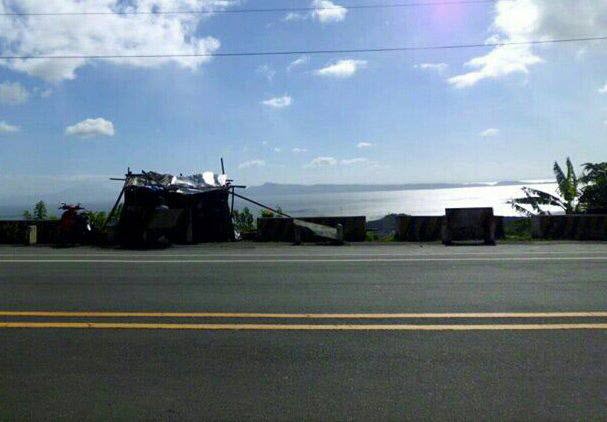
Good that Mike had his emergency money, good for the two to three full tanks of gasoline needed for the trip back and forth.We then noticed that we had a flat tire. A gasoline attendant directed us to a vulcanizing shop, which was about to close. But we begged the man there to help us, and he did.
We continued our trip but after 30 minutes we heard an abnormal sound in the engine, so we stopped to check. A ring had broken and had tobe changed. While Mike wasrepairing the engine, I texted FrHector Suano, the Operations Administrator of the Columban Mission Office,about our situation and asked for guidance. It was so overwhelming and inspiring that someone was supporting and praying for us. It strengthened our will to continue despite our troubles.
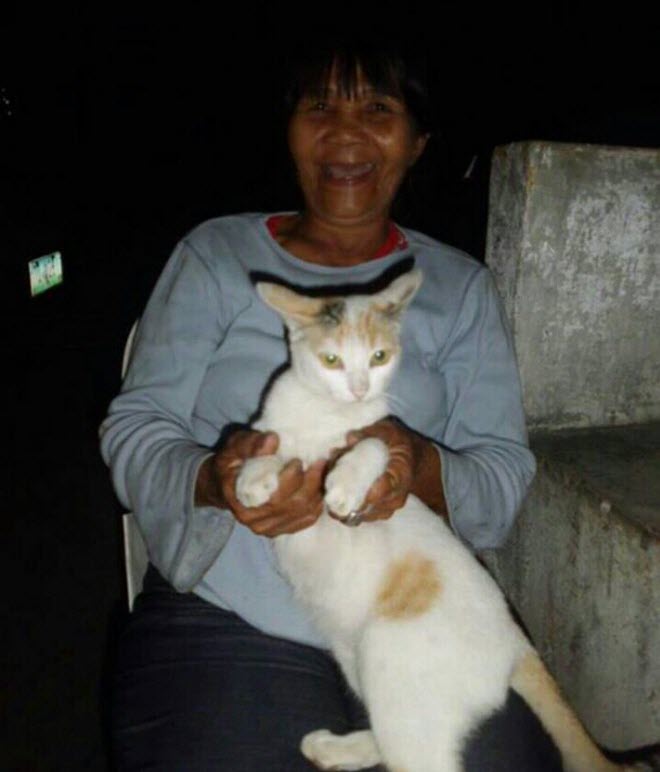
As we continued our journeythe belt suddenly cut off! Mike had a spare onebut it wasn’t very strong.Again, we stopped, repaired continue’. ‘Oh no you don’t!You can’t stop us!’ we said as we felt that something was trying to stop us from going to Nanay’s place. We were almost there when suddenly it rained. Heavy rain welcomed us as we arrived.
I ran directly to Nanay, not minding her drunken husband sleeping outside. She was surprised for she thought we would come some other time. I massaged her back, head and nape. I cooked noodles for her so she could release the heat inside her due to fever. After an hour, I could see Nanay smiling again and thanking me, saying that she felt better and that the pains were gone. It was so challenging and so tiring but after seeing those happy eyes of Nanay I felt it was all worth it.
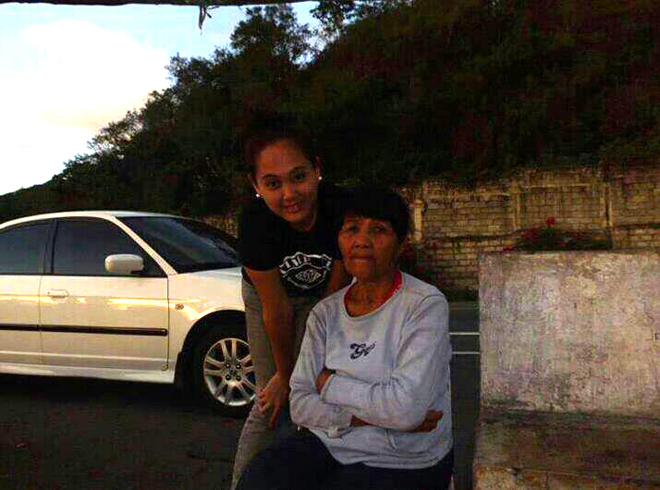
I like to help as many people as I can. You don’t have to be wealthy to help others. If there’s a will, there will always be a way. Action speaks more loudly than words. If you really want to help, don’t just make your brain work. DO IT!





